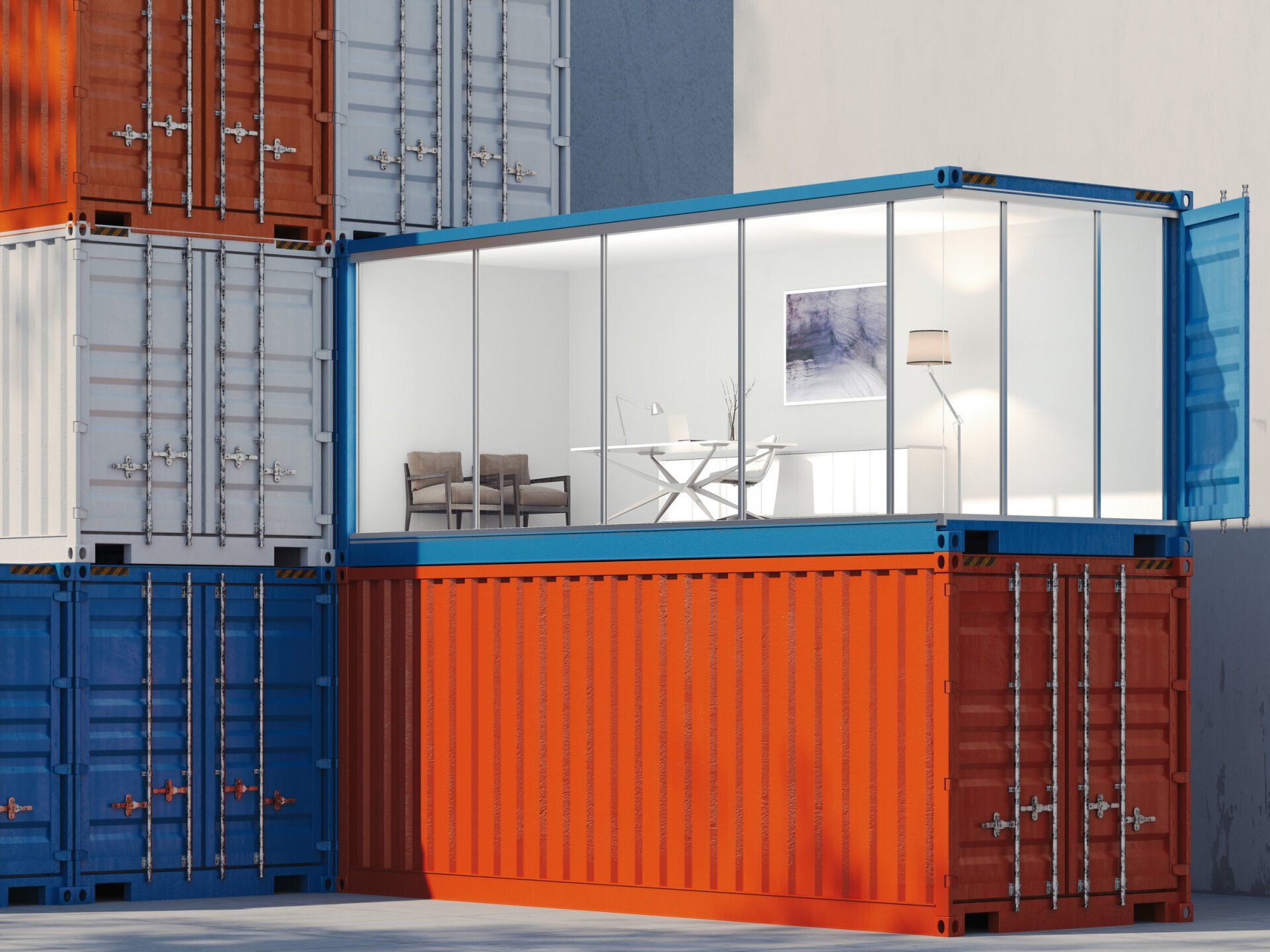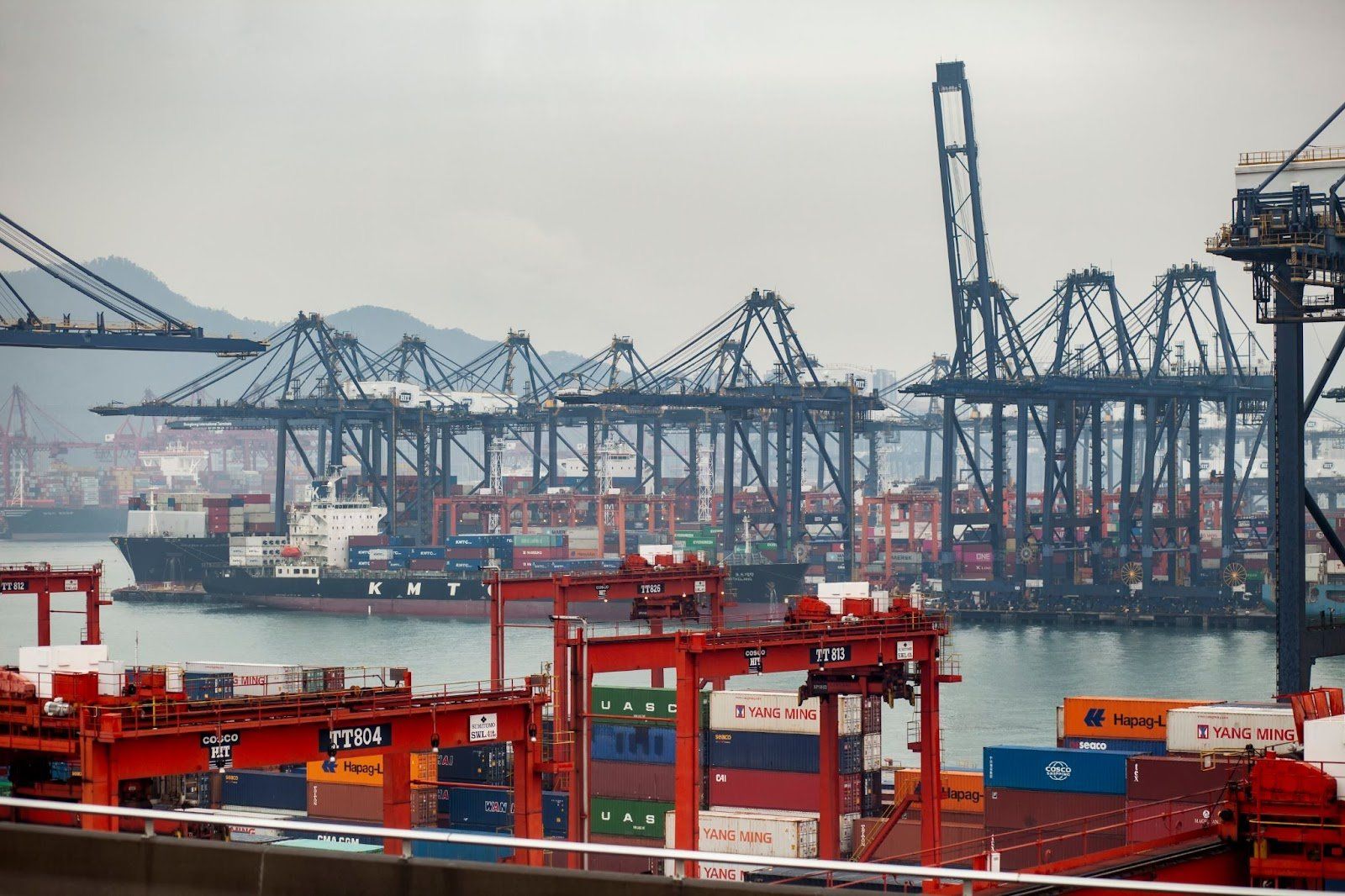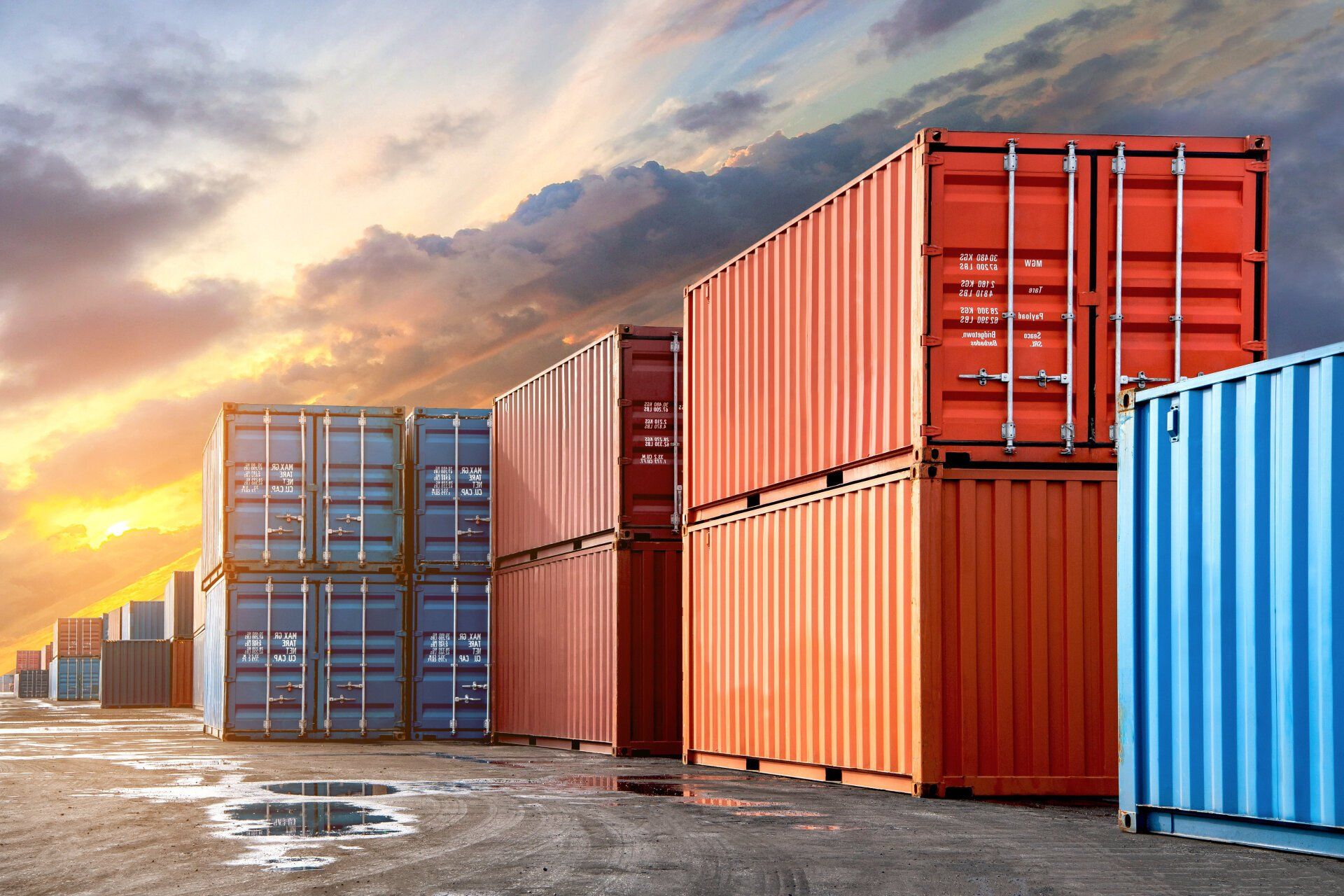Blog

Shipping containers are huge, without question. In fact, the most common containers measure 20 feet, while some special containers even go beyond 40. These large containers are built to hold a lot more than 20,000 kilograms each, being moved as swiftly as possible from port to port. These shipping containers have drastically improved product transportation, making a whopping estimated 200 million trips annually. Which begs the question: how are these heavy containers shipped? In your lifetime you must have seen a large steel container transporting goods whether on rail, road or on a boat. Shipping containers easily transport cargo from point A to point B - or officially when a container is loaded and then brought back and forth to the port, it’s called ‘drayage’. It may seem that transporting a shipping container is a simple process, but it is a complex system, which is full of checks and procedures. Firstly, there are three main stakeholders involved: The importer, exporter and then finally, the shipping company. Each one has a different role in the shipping process - the shipping company only delivers the cargo to the importer once they have received it from the exporter (usually from another country). And, although there are three main stakeholders, other services may be involved in the process, in order to help streamline the shipping of the containers. For example, a shipping agent or lorry company. Each container’s position and movement at any point in time has already been predetermined. Shipping companies have cargo planners, who are in charge of planning these loading processes, from start to finish. Every detail concerning both the ship and each container is considered in the loading plan, including container weight, container unloading port, ship capacity (or cargo stowage), and ship fuel. Such factors are crucial not only for obtaining the most efficient loading and unloading of containers, but also for a safe journey for the ship and its cargo. Shipping containers can also come in versions such as refrigerated, high cube, open top, liquid and many more available for every possible cargo load! Keep reading to find out the process of how shipping containers are shipped… The process of how shipping containers are shipped The process is as follows: The exporter (a company who is in need of cargo being shipped) will first select a shipping company whose container will come to its factory for cargo loading. Next, a freight forwarder will assist both the importer and exporter for the transportation of cargo, this includes getting the containers from the shipping agent and then bringing the empty container to the (external) exporter for filling of the cargo into the container. The freight forwarder will arrange for the transport to move the container from the exporter warehouse or factory to the designated shipping port for loading into the ships. Next the shipping agent takes care of all the port paperwork which can include customs checks, and final inspections of the container. They will also pay the port in order to shift the container(s) inside the designated port warehouse or storage facility. The container is kept at the port warehouse or storage facility in the specially ordered container stacks until the designated ship arrives for transport to the destination port. Once the designated ship has arrived, the container is brought to the ship's side by a special computerised crane called a bomb cart. It is necessary to place each container in its correct position on the ship based on important factors such as weight and where it’s designated port is, this will make off loading a lot easier. Depending on each container and when they are due for unloading, the closest destination container will usually be kept on the deck - these containers are provided with extra lashing so they do not fall overboard or become loose in rough seas. Once loading is finished, it will proceed its journey for the first assigned port for off loading. Additionally, during the voyage for extra safety, crew aboard the ship will regularly check containers to ensure their lashing is secure and containers are not damaged or leaking. Next, once the ship reaches the port, the container will be unloaded by the computerised port cranes and then is transported to further storage using the port container lorries. Once all containers are unloaded and stored safely, the representative of the importer will present the bill of lading (and further documents) to the port and shipping agent. Once the importer’s representative or the freight forwarder has claimed the shipping containers, the cargo will be transported - with vehicles such as lorries - to the importer’s warehouse where the container is unloaded. The container which is now empty is returned to the shipping agent and the process will begin again. Thousands of containers are transported daily around the globe which makes it easy for businesses to trade and import/export cargo. And this is why there are lots of shipping containers available to hire, sell or to purchase, if you’re interested in obtaining one get in touch with us at CS Containers. Whether you’re making a bar in your garden, in time for summer, or you just need some extra storage space - we’re here to help! Get in touch CS Containers are a family-based company in Kent. We have over 23 years of experience in the container and shipping industry and cover a range of shipping container requirements, including hiring, buying and selling. Are you thinking about buying a container or adding some accessories to an existing container? Get in touch with us today for a quote!
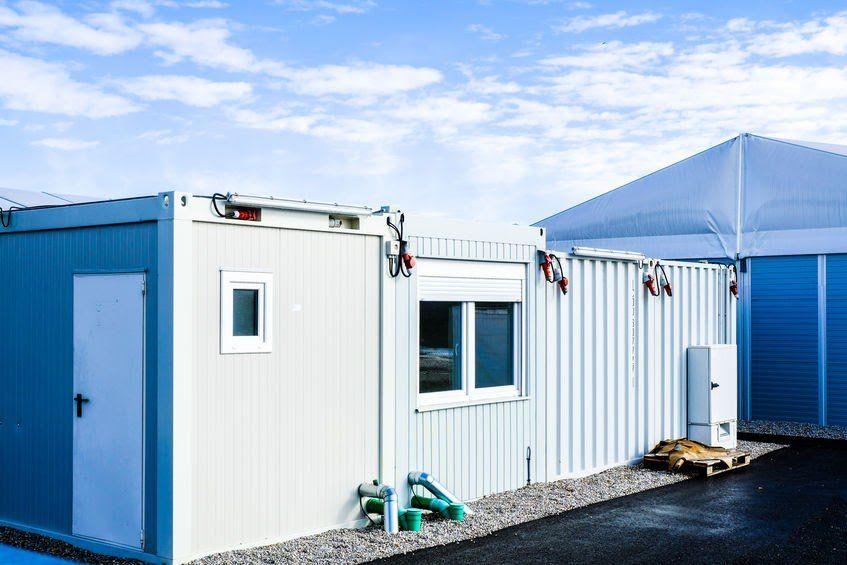
Shipping containers have lots of uses including apartments and storage - you name it! But have you ever heard of converting old shipping containers into portable classrooms? Students in Chickasaw, Alabama are doing exactly that! A class at Chickasaw High School has been working on this project for a few months. They are creating these classrooms for third world countries, including a poverty-stricken community in Honduras, that has no electricity. The shipping containers will be donated to areas that need them and will be powered by computer labs and solar panels. Additionally, the containers will also double as a storm shelter for added protection as these areas are prone to heavy weather and natural disasters. In 2022, when the classroom containers are ready to be shipped, the students will be able to travel to Honduras to do the final setup. The staff are very fond of this idea too! Brian Copes from the Brian Copes’ Architecture and Construction Class said this project benefits both students in Honduras and Chickasaw, as this hands-on project allows students to learn new skills and think about their futures in their architectural careers. He said to American news outlet NBC: "I’m starting to see the kids more engaged and seeing their work ethics and problem-solving skills comes into play." Additionally, Dr. Michele Eller, Assistant Superintendent of Chickasaw City Schools said: "This has opened their eyes more than any type of book work or assignment. Because they know that the project they are working on is going to change lives." Students have also had their say - David Smith, a Chickasaw High School Student told NBC: "It's a good opportunity because some people don't know what to do after graduation." Jaylin Nichols, a Chickasaw High School Student said: "The stuff we are learning, we will carry it with us our whole lives.” It isn’t just American students paving the way for the ‘shipping container classroom’ idea for poverty-stricken areas - a solar-powered computer lab in South Africa, Barrydale, was set up in November 2020 by Net vir Pret , in partnership with the University of Cape Town’s Students’ Health and Welfare Centres Organisation . The movement is sponsored by Dell Technologies and these container labs can be found in countries across the world, including Mexico, Colombia, Morocco, Kenya and Ethiopia! Each classroom has widely opened up new opportunities for students who have little or no access to the internet in third world countries. Classes in these solar-powered labs are expected to start as early as this year, in 2021! Is this the future - shipping container classrooms? If we have easy access to these containers, why not use them to their full potential and create meaningful spaces that young people and students can learn and develop in? If you’re thinking of hiring or buying a shipping container, get in touch with us and see how we can help below. Get in touch CS Containers are a family-based company in Kent. We have over 23 years of experience in the container and shipping industry and cover a range of shipping container requirements, including hiring, buying and selling. Are you thinking about buying a container or adding some accessories to an existing container? Get in touch with us today for a quote!
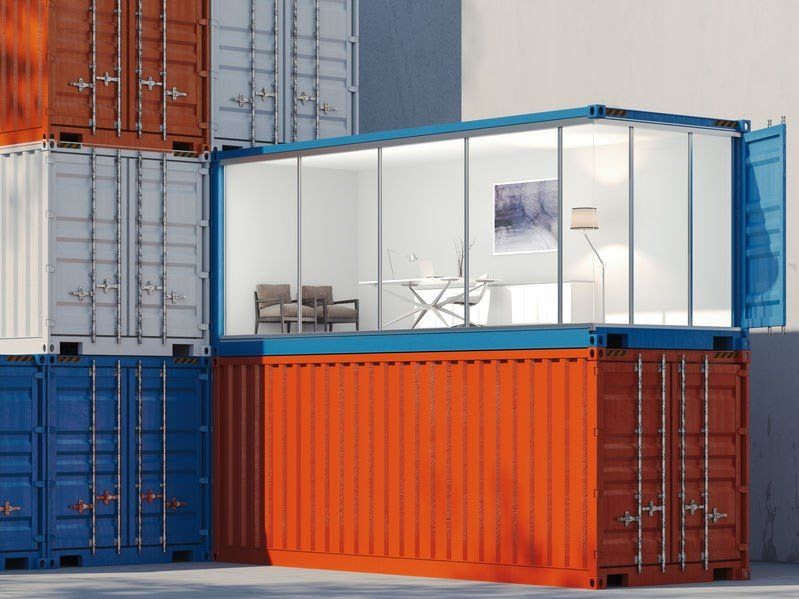
In America, there is a new startup business that has big plans for those who are looking to live in tiny apartments. This company is currently proposing a new apartment complex which will be made entirely of shipping containers in downtown St. Petersburg, Florida. Could this be the new norm? Path Communities think so! The company’s vision includes 31 ‘micro-apartments’, each one having 320 square feet of living space each. The co-founder, Brandon Casten, has said: “For a subset of the population, this is not only going to be an affordable, nice place to live in the middle of the city, but the size of the unit will be a feature and not a bug." Rent is expected to range from under $1,000 to $1,300 a month (£720 - £937). The whole idea of this complex is to be a ‘little luxury' and many people have already expressed interest! Construction is due to being at the start of May. Brandon Casten and his business partner, Scott Brien, have said to be focused on designing the interior of the apartments, to maximise space by making a 40-by-8-foot space feel as large as possible! Casten said that they: "Really want to make the outdoor space an extension of the unit itself.” He added: “We are really gonna open up back to the backyard and we are gonna try to incorporate permaculture design so we’re gonna have some fruit trees and some gardening in the backyard." Although Path Communities are paving the way in terms of shipping container apartment complexes, many people are already on board to have a tiny home as their first home. According to a survey conducted in late 2020 by Investment Property Exchange Services (IPX 1031) , 86% of Americans agreed. Among those who were surveyed, 65% said that affordability was the main factor. This could be due to the cost of homes skyrocketing alongside wages decreasing and unemployment at an all time high. Living in a tiny home is most popular among millennials. Chelsey Hathman, 29, renovated her van to live full-time and had spoken to news outlet, Next Advisor, about why she made this decision: “I wanted financial freedom.” She added: “What I really want is to be able to save up enough money to buy a container home for myself...It would be much more affordable for me than a condo or larger house.” Hathman said regarding the idea that millennials want to live in tiny homes: “A lot of millennials don’t really see financial freedom in their future.” She added: “Our wages haven’t kept up with the cost of living. And so owning a regular home is outside the realm of possibility for too many of us.” In addition to this, there is also ‘The Tiny House Movement’. This is a trend whereby tiny houses have become a social movement. Due to higher demands on affordability, people are choosing to downsize the space they live in and live with far less including that accompanies the tiny house lifestyle like minimalist living. Many people are opting to live in a container home; a dwelling made from recycled steel shipping containers that may have been used as a cargo carrier on a ship, train or lorry. Due to their size and the ability to repurpose them, container homes are seen as environmentally friendly. They come with unique costs, unlike regular housing, like permits and land ownership, but overall, they are much cheaper than a traditional house! Could you imagine yourself living in a container home? Or possibly turning one into a lodge in your garden? Get in touch with us today! Get in touch CS Containers are a family-based company in Kent. We have over 23 years of experience in the container and shipping industry and cover a range of shipping container requirements, including hiring, buying or selling. Are you thinking about buying a container or adding some accessories to an existing container? Get in touch with us today for a quote!
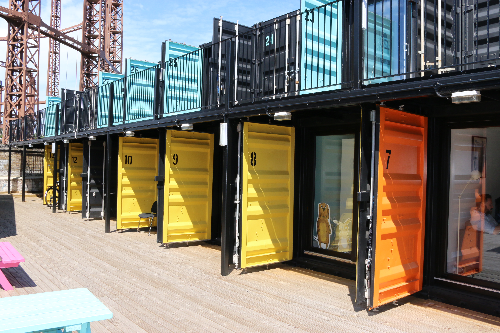
Containers can be used for much more than just storage and shipping! Does your container need brightening up? Or are you thinking about buying a container but are worried about a lack of brightness? Take a look at our top tips below! A fresh coat of paint Painting the inside and outside of your container can really help to brighten it up! Painting the inside with pale colours such as whites and light greys will help your container to seem lighter and brighter. The science behind this is that lighter colours reflect light much better than darker ones; this incidentally makes a room appear bigger and as if there is more light. The outside of your container is just as important as the inside! If you are using a container as part of a conversion, the outside of your container can help to bring together your design. Depending on its use, painting a container with bright colours can help to make it more attractive and appealing so it’s important to take this into account also. Install windows Here at CS Containers, we offer a wide range of container accessories, including window installation. Adding windows into your container is one of the easiest ways to brighten it up, as it allows for natural light to get in. It is important to think carefully about the placement of windows in your containers as this can affect the amount of light that comes through and at what times of the day. Windows also provide a view outside which can help your container to seem larger than it actually is! Installing windows into your container can also have many other benefits, such as letting in the fresh air and reducing condensation. Additionally, this will help to prevent mould. Lighting The easiest way to brighten up your container is to add lighting. The type of lighting that you choose needs to be best adapted to the space that you have. For example, large and clunky lighting fixtures wouldn’t be best for your container as they may take up a lot of space and could make the lighting too intense. Instead, you may like to choose smaller lighting fixtures such as lamps or even LED strip lights. The colour temperature of your lighting is also important in creating a bright ambience for your space. Choosing bulbs for your lighting that have a warm white colour temperature can help to create a cosier atmosphere. However, cool white bulbs create a more harsh white light, so this may not be ideal for a cosy container conversion! The positioning of your lighting can also change how bright your space seems. If you have overhead lighting, this can help a space to feel larger and brighter as the light will generally stretch across a wider area. If you have a more focused light source, such as a lamp, the light is unlikely to travel as far and so it could make your container interior seem smaller. Reflective surfaces Mirrors and other reflective surfaces that you may have in your container can help to increase brightness as they help to ‘bounce’ the light around the room. This can assist with getting light into the smaller nooks and crannies of your space! Get in touch CS Containers are a family-based company in Kent. We have over 23 years of experience in the container and shipping industry and cover a range of shipping container requirements, including hiring, buying or selling. Are you thinking about buying a container or adding some accessories to an existing container? Get in touch with us today for a quote!
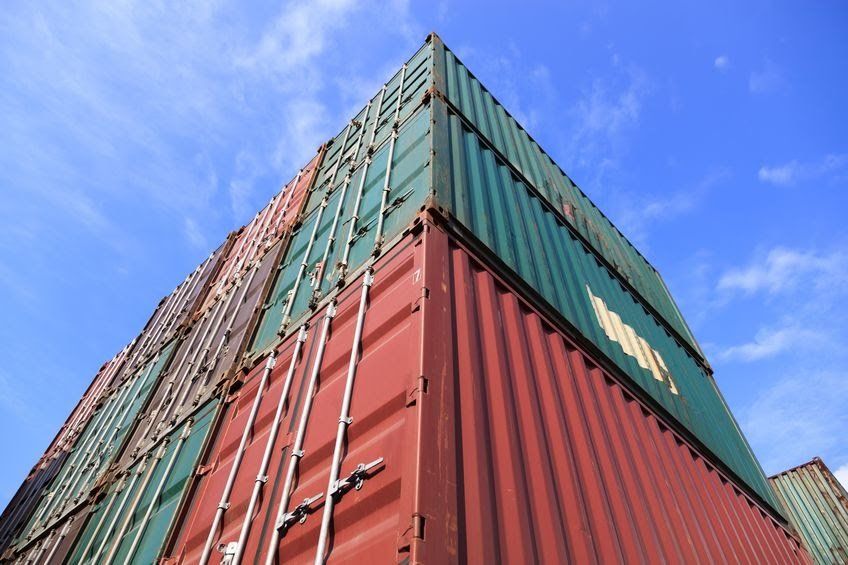
Every shipping container is designed to endure harsh marine environments as they sail across the globe. Because they’re exposed to the elements in such a way, this makes them pretty tough. Their exteriors are primarily steel with their interiors made from mould and rot-resistant materials. The paint also helps prevent corrosion and gives them an extra layer of protection. Naturally, it also lends to them not needing to be maintained as much as you might initially believe. However, they will need some maintenance eventually, even after they’ve been converted. To keep your container in top condition, it’s important to look after it and give it some semi-regular maintenance. Here are five things to keep an eye on with your container. 1) Inspect the Roof The first and most integral part of the shipping container to keep on top of (literally) is the roof. Second-hand containers especially often come through dented and slightly battered with other containers resting on top of them. Dents can collect rainwater, which can lead to corrosion and chipped paint. Naturally, this will lead to gaping holes in the roof, which is a problem for many different reasons. To prevent this, you can either replace the roof or give it another coat of paint. 2) Lubricate the Doors The next thing to keep maintained are the doors. While a converted shipping container may have entirely different doors than their original, this is still a priority as it is the primary means of access into your container. The most important thing is to clean and lubricate them. Make sure the hinges are intact and make sure that there is no rust in between the joints. Otherwise, it will be very difficult to get inside it. It will also be difficult to close. Our suggestion is to use copious amounts of WD-40 lubricant spray and a good quantity of grease. As with any moving parts, they are subject to damage and should keep an eye on, especially if it starts squeaking. 3) Treat the Rust Because they are steel, many shipping containers are at risk of rust. This is why they are always covered in a layer of paint. Of course, this helps delay the onset of rust quite a bit, but there is always a chance that it can come through, especially as it would’ve been exposed to salt-air environments. Look out for any dents, scratches or cuts that have been left exposed. Be sure to seal them up immediately with another coat of paint if necessary. This will ensure the lifespan of your container will last a lot longer. Naturally, most shipping container conversions have another coat of paint as part of the conversion process so this may not be a problem for many. However, it’s a good idea to keep on top of it. 4) Ensure Evenness This should go without saying, but the secret to any sound construction is to make sure your container is resting on level ground. The surface must be drained too to prevent water leaking through the floor. It also avoids water collecting in one area of the container. 5) Check Container Modifications Whatever you choose to do to your container, conversion or not, be sure to pay as much attention to the modifications and customisations as you would the rest of it. This is especially relevant if you have any extra doors, windows or other openings. Look, too, for any depressions or areas that are likely to collect dirt. Remove any rust in that area also and treat it with anti-corrosive paint. Fix Your Container with CS Containers Whether your container needs another coat of paint or some extra modifications, be sure to visit our page at CS Containers to have a look at the services we offer .

Thermal insulation within your converted shipping container is vital for a number of reasons. The first, of course, is for comfort. Imagine working in your container office with its bare metal walls in the middle of a cold snap. You would need a thousand heaters pointed at you and even then it wouldn’t be enough. But it’s also important to insulate containers to prevent condensation which can cause a whole number of issues for anyone inside it. Thankfully, there are a number of methods just as there is for many other buildings. Below, we’ve listed some of the most common method as well as an explanation as to what exactly insulation is. What Is Insulation? Every building is in some way insulated, even if it has paper-thin walls. The walls themselves act as an insulator to condition the air to maintain a different temperature to that from outside. However, a thin wall wouldn’t be able to this very well. While the air from outside couldn’t come in, the air inside would be able to leak through the materials in the wall. Unfortunately, shipping containers were originally built to transport your cargo, meaning they are not already equipped with effective insulation. Moreover, they are made of metal, meaning you can feel colder temperatures far more keenly than you would in a building made from brick and mortar. It’s therefore important every converted container has at least some insulation material installed. This will be an investment that will pay off in droves come the winter months. Both staff health and productivity will increase, meaning your business will benefit no matter which insulation you choose. Rockwool One of the most common insulation materials, Rockwool is very cheap and performs extremely well, providing there are no gaps in the material. Because it performs so well insulating containers, we’d argue that it may be worth investing in a higher quality Rockwall due to how cheap it is. It is a commonly used insulation product that many container conversions use. Kingspan Like Rockwool, Kingspan is an incredibly effective method that allows you to retain heat within a container during winter. It is slightly more expensive, but it is worth the money as it is thinner, allowing more space to be utilised within the container. They are also particularly good at covering gaps Spray Foam While not as commonly used as the other two materials, spray foam is a viable solution with shipping container conversions. It provides a seamless vapour which is quick and easy to apply. However, it is a more expensive option, hard to get if you’re working with a budget. But it works just as well as any other insulation material so if you are working with a smaller budget, it may be worth getting. Ply Lining At CS Containers, one of the ways in which we can cover your chosen insulation within your container conversion is through ply lining. A lot of reasons people tend to go for this is because, in addition to being effective insulation boards, plywood is aesthetically pleasing and allows for good decorating. The ply lining we use is also of high quality, manufactured to make your container more energy-efficient. Simple to put up, it can become an effective form of insulation and look professional at the same time. An elegant finish ideal for your office environment. Melamine An alternative method of covering your insulation is melamine boards instead of plywood. Not as aesthetically pleasing to look at as plywood, it is still an easy and effective way of covering insulation material. For any 20ft shipping container conversion, any material that has insulating properties can be used to help keep it warm during the winter months. Shipping Containers for Sale If you’re in the market for shipping containers for conversion, we at CS Containers have plenty to offer. Check out our containers page and choose whichever size that suits your requirements. We ship nationwide so we’ll be able to deliver it to you no matter where you’re based. And once you’ve bought your container, get in touch with us about insulation. Visit our accessories page for more details!

